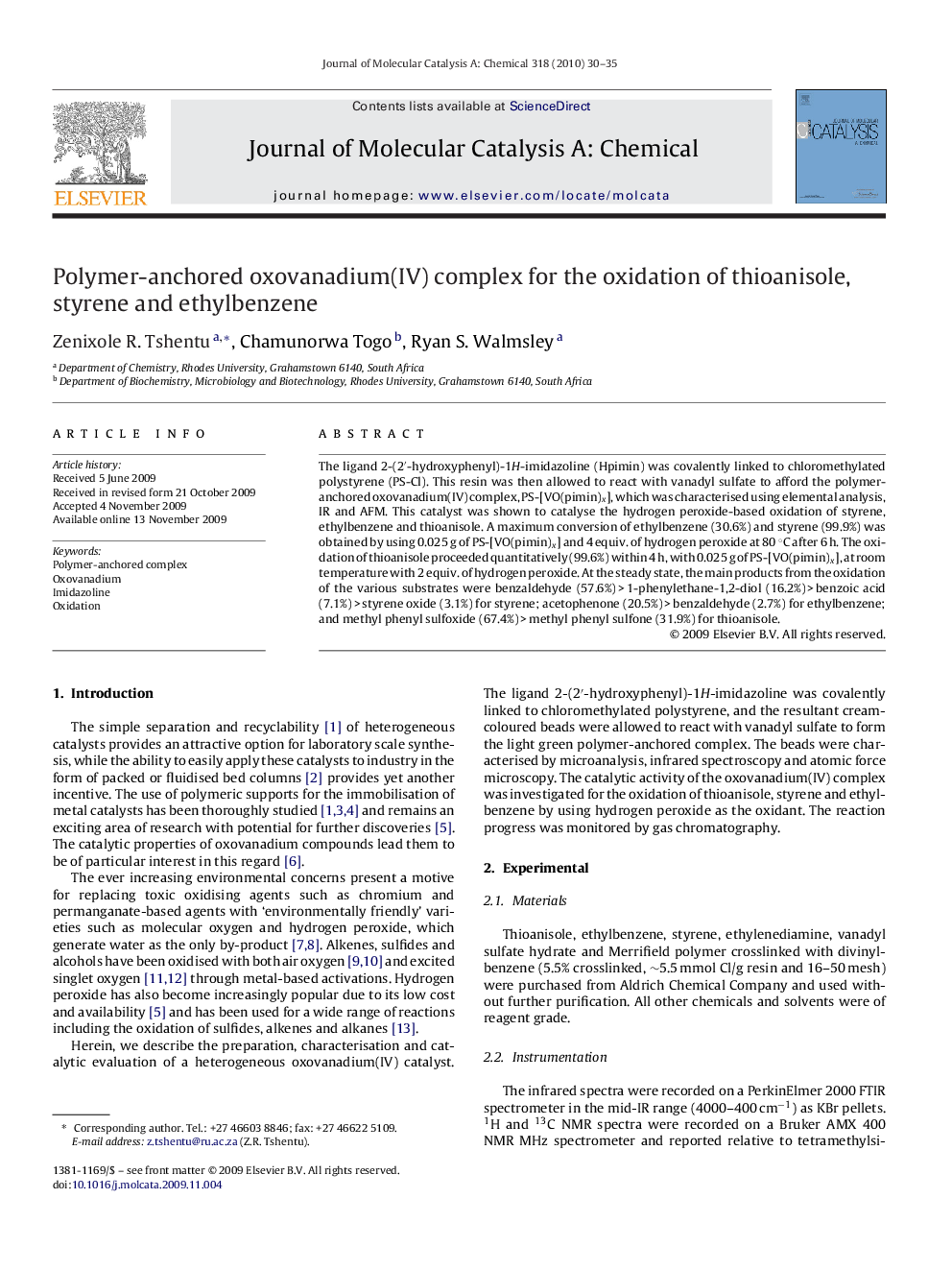| Article ID | Journal | Published Year | Pages | File Type |
|---|---|---|---|---|
| 66852 | Journal of Molecular Catalysis A: Chemical | 2010 | 6 Pages |
The ligand 2-(2′-hydroxyphenyl)-1H-imidazoline (Hpimin) was covalently linked to chloromethylated polystyrene (PS-Cl). This resin was then allowed to react with vanadyl sulfate to afford the polymer-anchored oxovanadium(IV) complex, PS-[VO(pimin)x], which was characterised using elemental analysis, IR and AFM. This catalyst was shown to catalyse the hydrogen peroxide-based oxidation of styrene, ethylbenzene and thioanisole. A maximum conversion of ethylbenzene (30.6%) and styrene (99.9%) was obtained by using 0.025 g of PS-[VO(pimin)x] and 4 equiv. of hydrogen peroxide at 80 °C after 6 h. The oxidation of thioanisole proceeded quantitatively (99.6%) within 4 h, with 0.025 g of PS-[VO(pimin)x], at room temperature with 2 equiv. of hydrogen peroxide. At the steady state, the main products from the oxidation of the various substrates were benzaldehyde (57.6%) > 1-phenylethane-1,2-diol (16.2%) > benzoic acid (7.1%) > styrene oxide (3.1%) for styrene; acetophenone (20.5%) > benzaldehyde (2.7%) for ethylbenzene; and methyl phenyl sulfoxide (67.4%) > methyl phenyl sulfone (31.9%) for thioanisole.
Graphical abstractThis paper describes the synthesis of a polymer-anchored oxovanadium(IV) complex, and its catalytic activity towards the oxidation of styrene, thioanisole and ethylbenzene using hydrogen peroxide as the oxidant.Figure optionsDownload full-size imageDownload high-quality image (45 K)Download as PowerPoint slide
